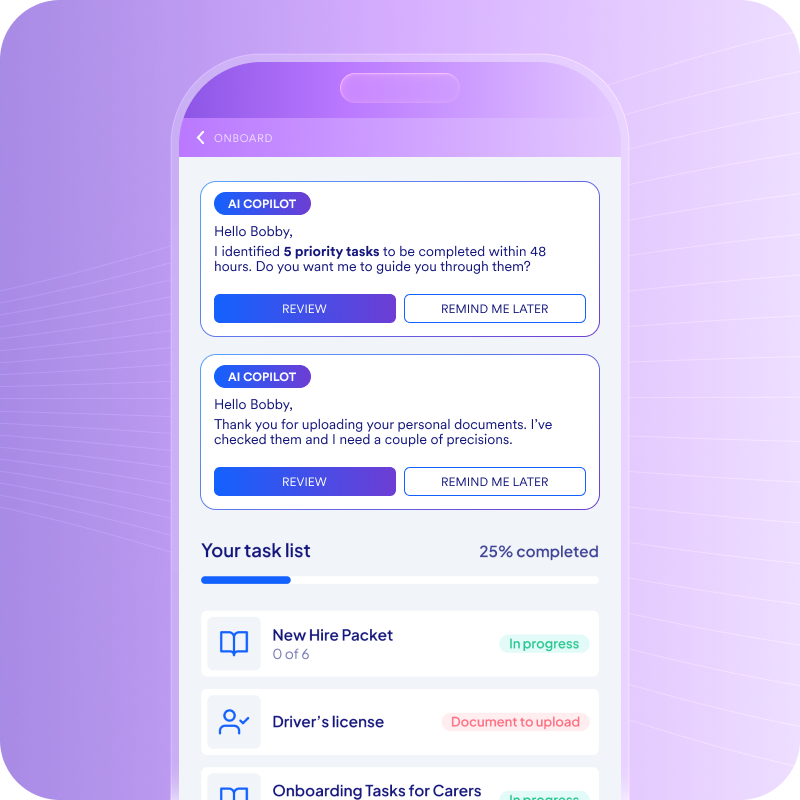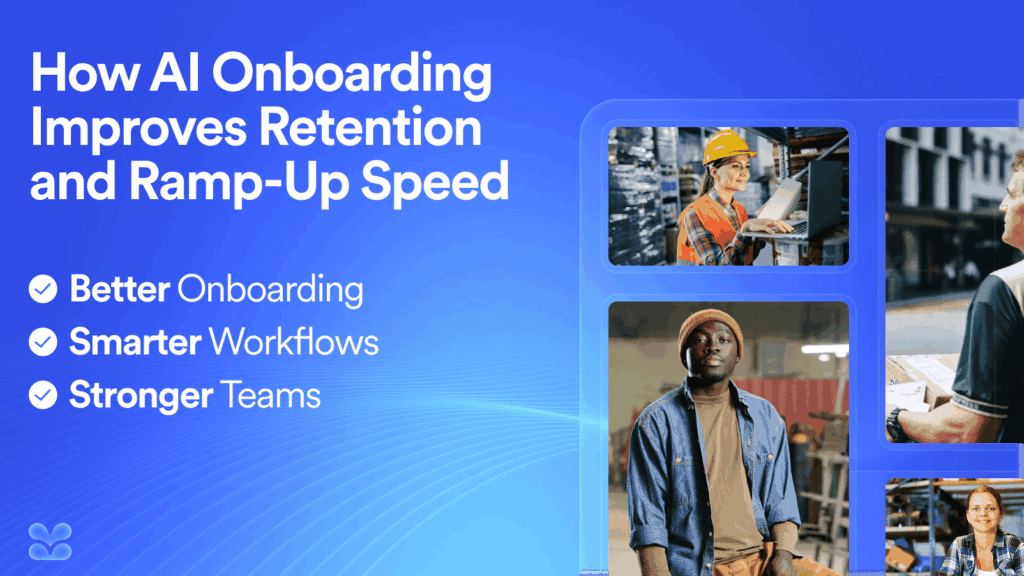
Hiring and retaining frontline employees is one of the most urgent—and costly—challenges facing HR leaders today. Without a strong onboarding process, many new hires leave within weeks, compounding already high turnover rates.
The Frontline Turnover Crisis
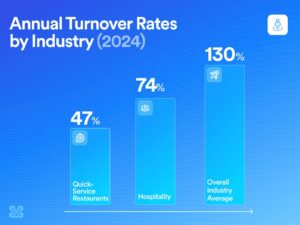
In frontline-heavy industries, attrition is alarmingly high—exceeding 130% in quick-service restaurants and hovering around 74% in hospitality. That means restaurants and hotels are replacing most of their workforce every year, creating an expensive, unsustainable cycle of churn.
The Hidden Cost of Losing a New Hire
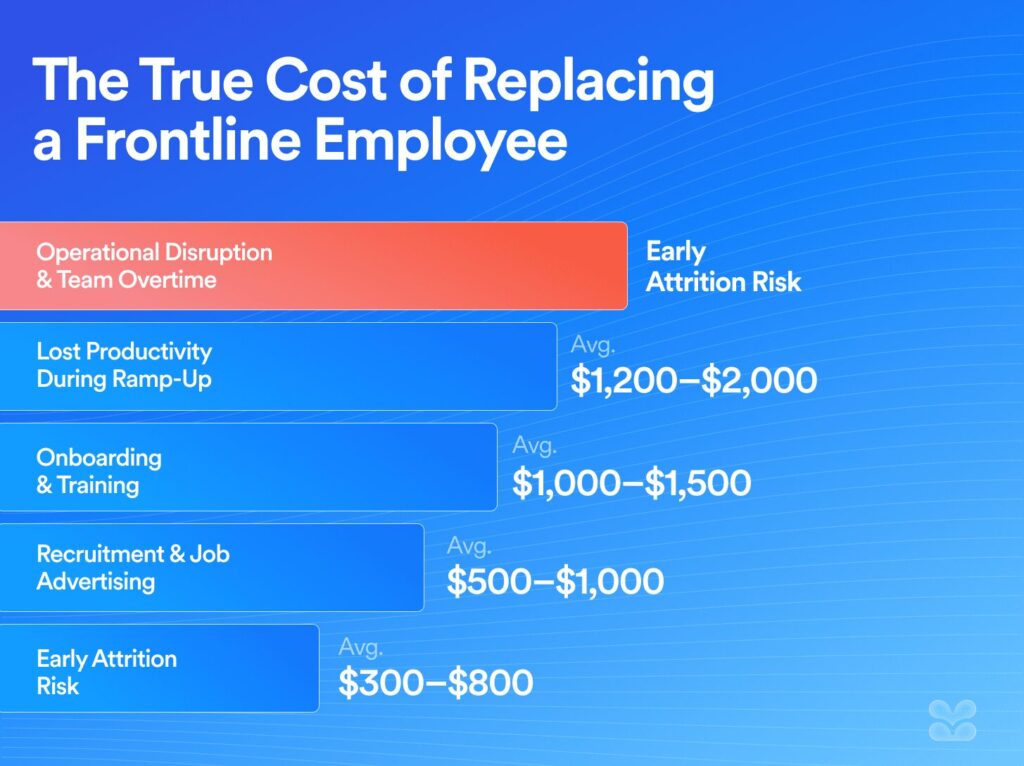
According to SHRM, the average cost to hire a new employee is about $4,700, a number that climbs even higher when you factor in training, lost productivity, and the early stages of the employee lifecycle. For hourly frontline roles, the total replacement cost typically lands between $3,000 and $6,000. And with ramp-up taking six months or more, HR leaders are under pressure to make every new hire interaction count.
Today, those first weeks on the job are no longer just about paperwork—they’re a critical lever for driving retention, productivity, and candidate satisfaction. Increasingly, employers are turning to AI-powered solutions to improve the early employee experience and strengthen their frontline workforce from day one.
✅ Why the First 60 Days Are Critical to Retention
Onboarding remains one of the most underleveraged tools in frontline workforce management. When done right, it reduces friction, accelerates productivity, and drives better outcomes at scale.
When processes are inconsistent or overly manual, HR teams face:
- Higher turnover within the first 30–60 days
- Delayed productivity and slower ramp-up times
- Excessive administrative workload for HR teams
- Increased compliance risk
Organizations that prioritize a structured, modern onboarding experience see:
- 82% higher new hire retention
- 70% higher productivity in the first few months
The message is clear: onboarding isn’t just a handoff—it’s your first opportunity to retain top talent.
🤖 Automating the Start of the Employee Journey
Modern AI technology is reshaping onboarding by eliminating the bottlenecks that slow down new hire success. Today’s frontline workers expect a seamless, mobile-friendly process.
AI onboarding delivers by:
- Automating administrative tasks like I-9 verification and document handling
- Personalizing onboarding flows by role and location
- Reducing manual steps through real-time scheduling and documentation
- Engaging candidates through proactive messaging and task nudges
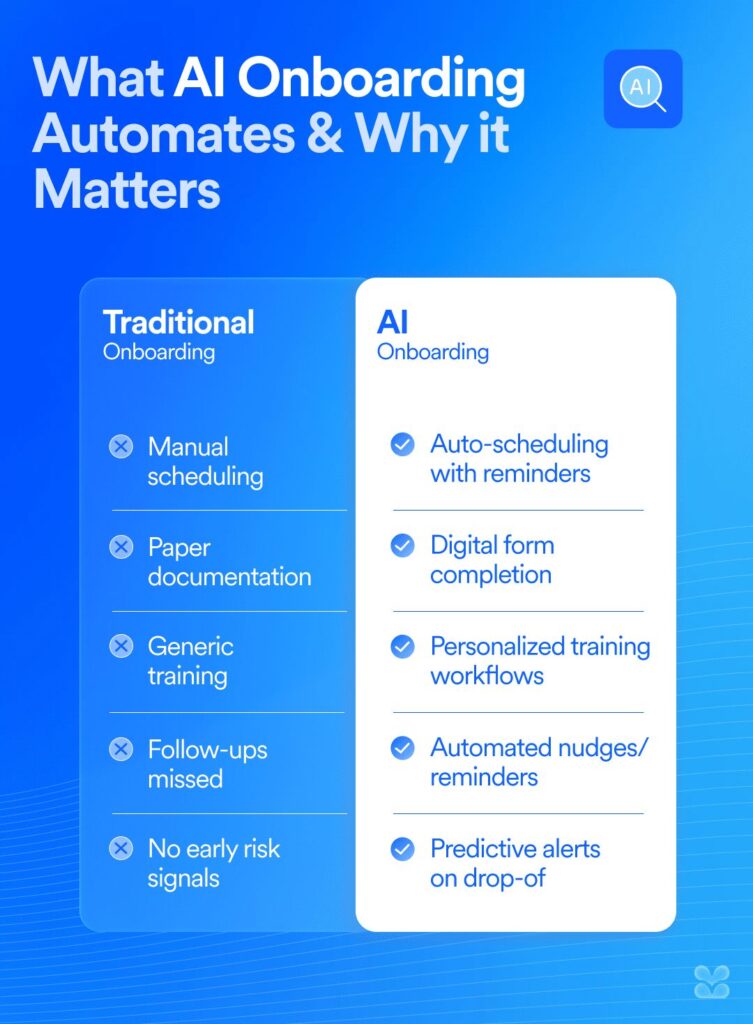
When onboarding is supported by intelligent automation, it becomes a competitive differentiator—not a compliance formality.
📈 How Automation Impacts Hiring Efficiency and Retention
The measurable benefits of AI-driven onboarding are already evident across high-volume employers:
- 160% faster time-to-hire
- Up to 70% reduction in recruiter workload
- 30–50% increase in HR productivity
- Significant reductions in early attrition
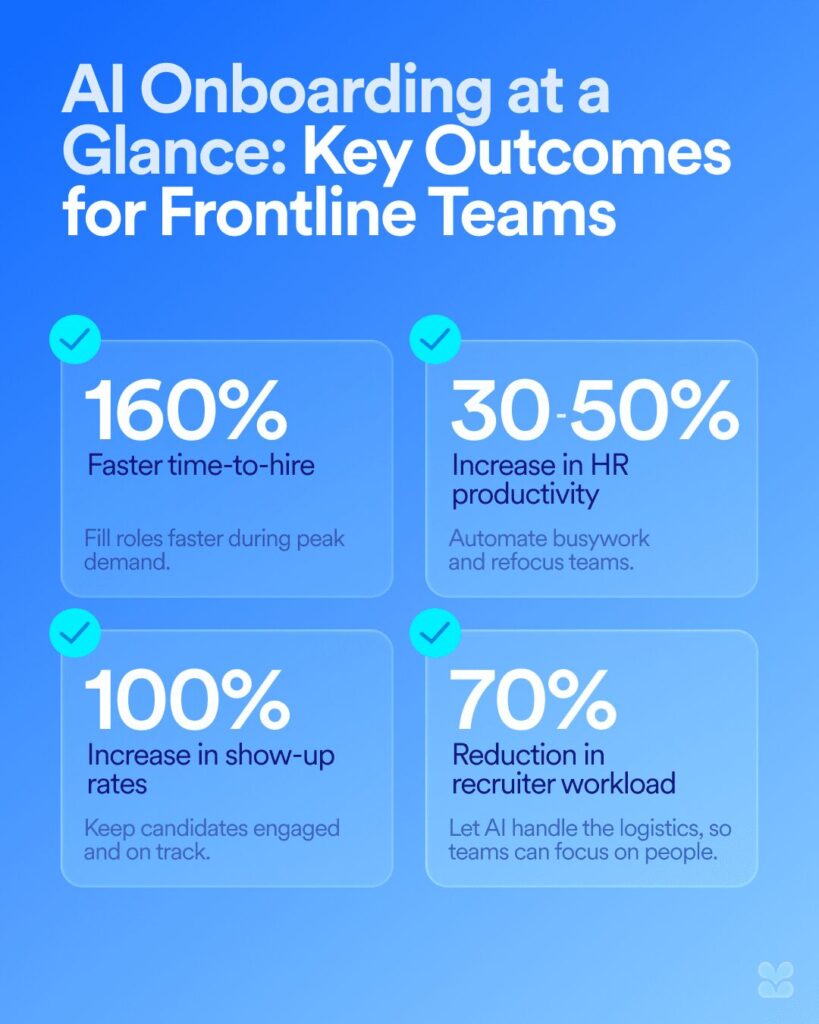
Organizations using onboarding automation at scale aren’t just speeding up processes—they’re increasing their ability to hire, train, and retain more effectively than competitors.
📦 What Frontline Employers Are Achieving with AI

Here’s how AI-driven talent integration is helping employers in key industries achieve measurable improvements, based on anonymized data from Fountain customers:
- Retail: Seasonal hiring streamlined with mobile-first workflows, cutting days off hiring timelines.
- E-Commerce: A global fulfillment company doubled its interview show-up rate within two weeks through automation and smart candidate engagement.
- Logistics: Distributed warehouse teams reduced early turnover with location-specific workflows tailored by AI.
- Healthcare: Faster time-to-fill for urgent patient-facing roles through digital scheduling and automated compliance.
- Hospitality: Restaurant groups cut training and paperwork completion time in half with mobile access and automated follow-ups.
Together, these examples illustrate a simple truth: when AI systems are applied thoughtfully, they drive scalable results in speed, engagement, and retention.
🚀 Conclusion: Turning the First Days Into a Competitive Advantage
In frontline industries defined by constant churn and urgent hiring demands, onboarding is one of the few moments where HR leaders can directly impact both business outcomes and employee experience.
Those first days are no longer just about paperwork—they’re a defining moment for engagement, compliance, and long-term retention.
We’re seeing a shift from reactive, checklist-based workflows to proactive systems that personalize the new hire experience at scale. At the center of this shift is AI—not to replace human effort, but to remove friction, surface insights, and give HR teams the space to lead strategically.
Forward-thinking organizations are using onboarding not just to fill roles—but to fill them with people who stay, perform, and grow. That’s what makes it a true competitive advantage.

